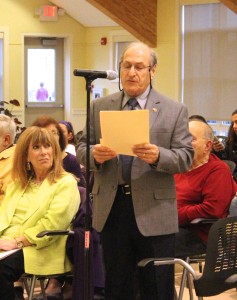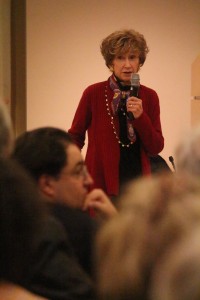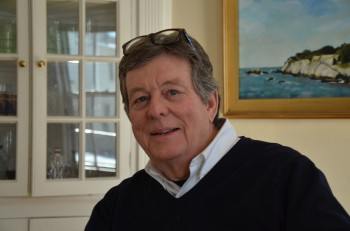Photo: The proclamation commemorating the Armenian genocide, April 21, (from left) Jim Williams, Jirair Hovsepian, Mon. Atamian, Sami Baghdady and Mark Paolillo.
It’s remembered as “Medz Yeghern,” the “Great Crime”, the genocide of Armenians by the Ottoman Empire in present day Turkey in the midst of World War I.
Historians said the mass extermination of Armenians began on April 24, 1915, the day Ottoman authorities arrested and later executing 250 Armenian intellectuals and community leaders in Constantinople.
To recognize the events of a century past, the Belmont Board of Selectmen issued a proclamation, the seventh in as many years, on April 21, commemorating the 100th anniversary of the deaths of more than a million Armenians.
“It is an event that should never be forgotten,” said Selectmen Chair Sami Baghdady.
Before the proclamation was signed, a Belmont resident spoke out on why the town’s declaration was important.
“We will altogether stand up and raise our voices in a well-tuned unison,” Jirair Hovsepian, a Chandler Street resident, told the selectmen.

“We will continue to proclaim loud and clear that the organized annihilation of 1.5 million innocent people, our ancestors, is not the fruit of one nation’s imagination or a leisurely invented brutal fairy tale,” said Hovsepian, a member of Boston Armenian Genocide Commemoration Committee
Home to generations of residents of Armenian heritage, Belmont has been a hub of expatriate activity and life, where survivors of the genocide – including Pastor Vartan Hartunian of the First Armenian Church in Belmont – would keep the experience alive.
Monsignor Andon Atamian, the pastor of the Holy Cross Armenian Catholic Church in Belmont, said a prayer for the “martyred saints and our homeland.”
Hovsepian said the survival of the Armenian people “is a proclamation in itself,” ending by recalling the words of William Saroyan:
“Go ahead, destroy Armenia. See if you can do it. Send them into the desert without bread or water. Burn their homes and churches. Then see if they will not laugh, sing and pray again. For when two of them meet anywhere in the world, see if they will not create a new Armenia.”




